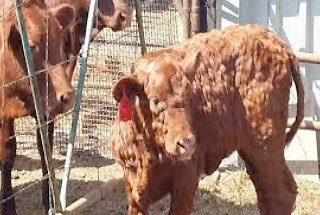Understand the signs of lumpy skin disease
The incubation period for lumpy skin disease is between 4 and 14 days post-infection.
After an initial period of high fever (41°C) and swollen lymph glands, the animal may develop large, firm nodules that are up to 5 cm in diameter in the skin.
These can be found all over the body, but particularly on the:
- head
- neck
- udder
- scrotum
- perineum.
The nodules may become necrotic and ulcerate, leading to an increased risk of flystrike.


Dairy cattle in peak production are often the most severely affected with a marked decrease in milk production. Depression, anorexia, rhinitis, conjunctivitis and excess salivation may also be observed.
In severely affected animals, necrotic lesions can also develop in the respiratory and gastrointestinal tract.
The disease can be subclinical (up to 50% of cases in an outbreak) or may be very severe or even fatal. Morbidity varies between 5 to 45% and mortality rate usually remains below 10% but both rates can be considerably higher when an outbreak occurs in a naïve cattle population.
Other diseases of cattle that could look like lumpy skin disease
- Ringworm and infection with other dermatophytes
- Dermatophilus infection
- Cutaneous leucosis
- Parapox (bovine popular stomatitis)
- Bovine herpes mammilitis
- Pseudo lumpy skin disease (bovine herpesvirus 2)
- Photosensitisation
- Insect bites
- Urticaria
- Demodectic mange
- Trauma, including burns
- Actinobacillosis (cutaneous form due to infection with Actinobacillus lignieresi)
Emergency Animal Disease Watch Hotline
Lumpy skin disease is a notifiable disease. At first suspicion of disease, notify Agriculture Victoria immediately on the Emergency Animal Disease Hotline 1800 675 888 or contact your local veterinarian or Agriculture Victoria Animal Health and Welfare staff.